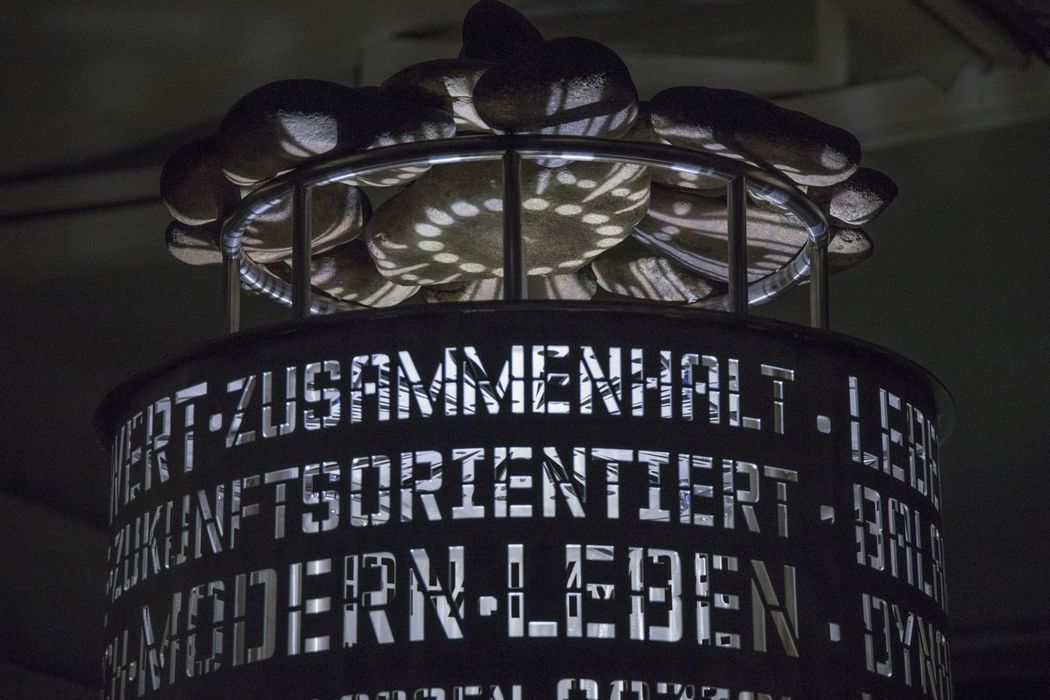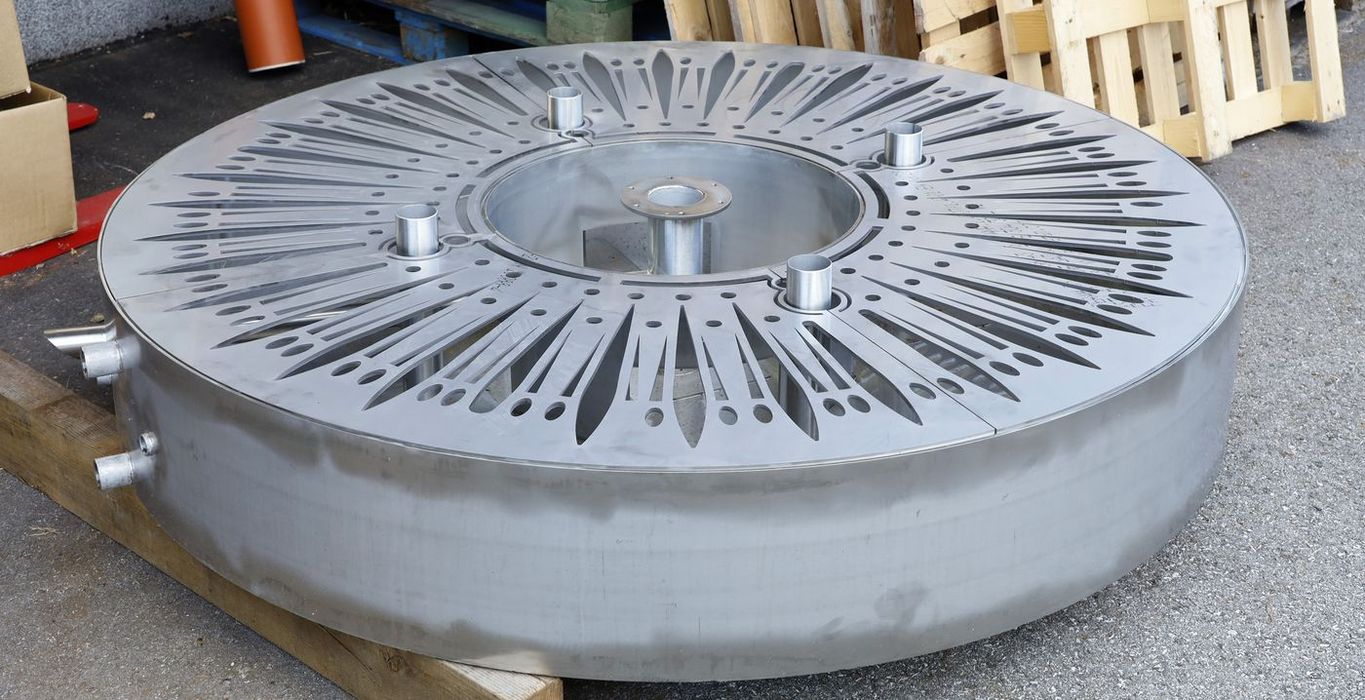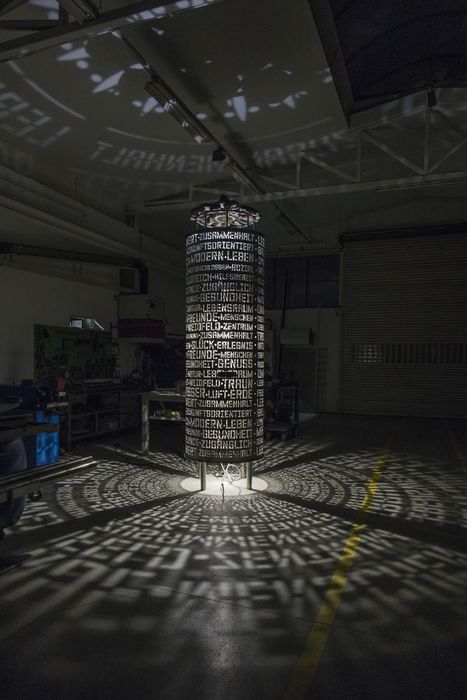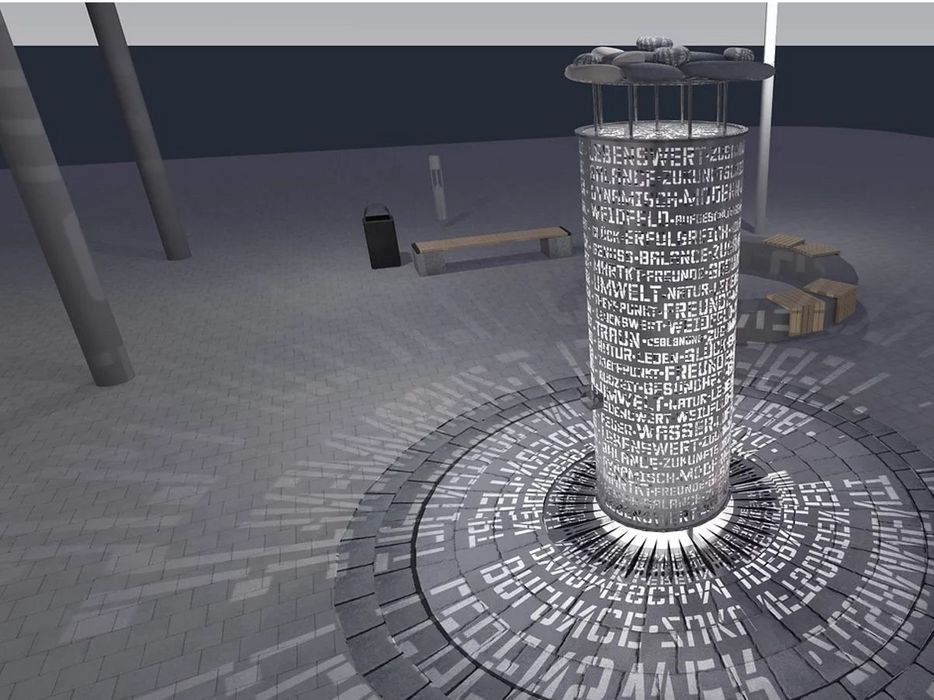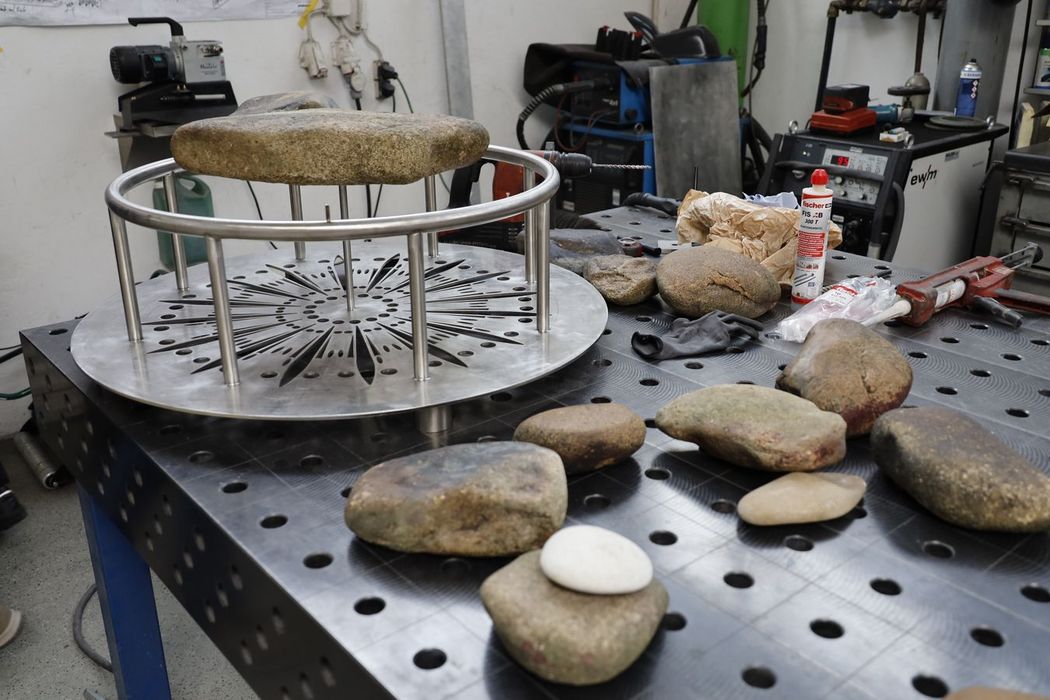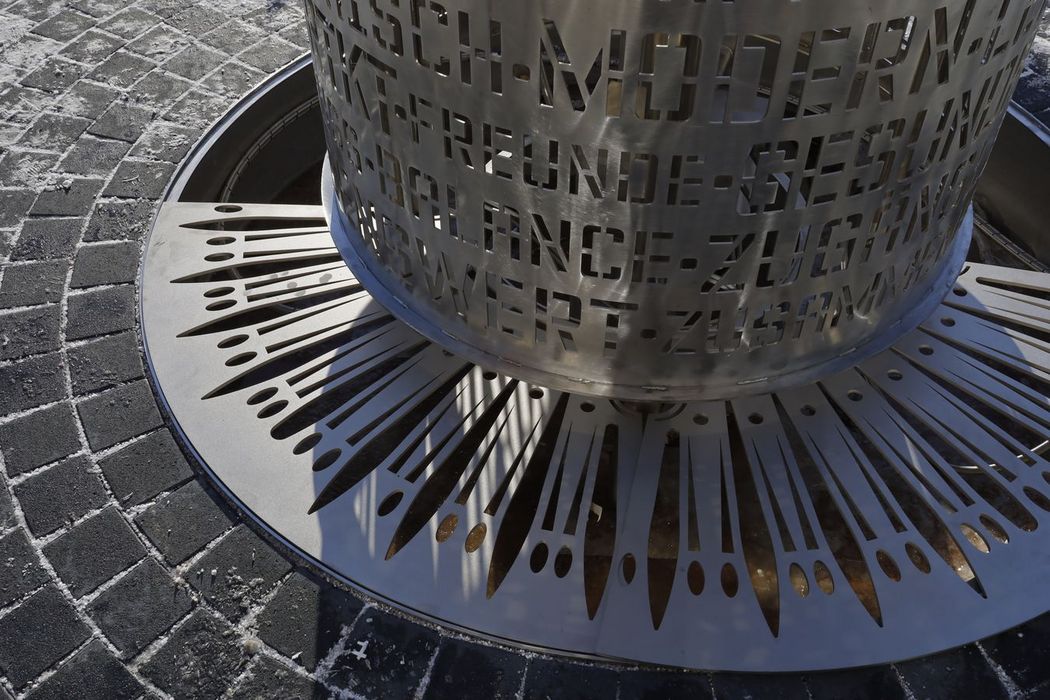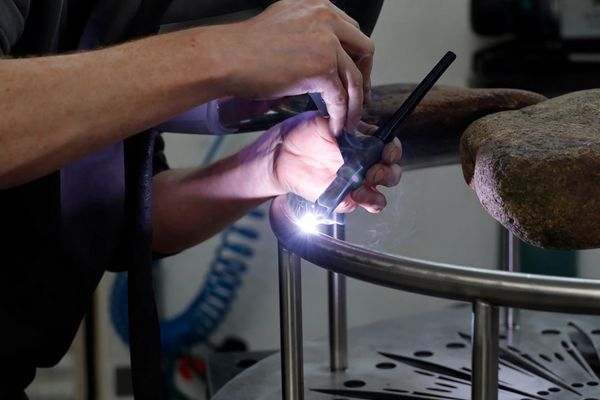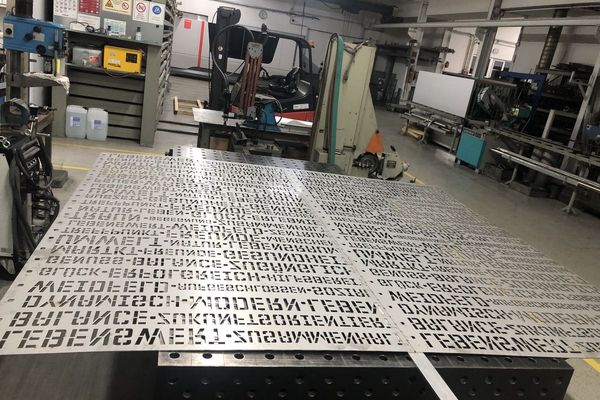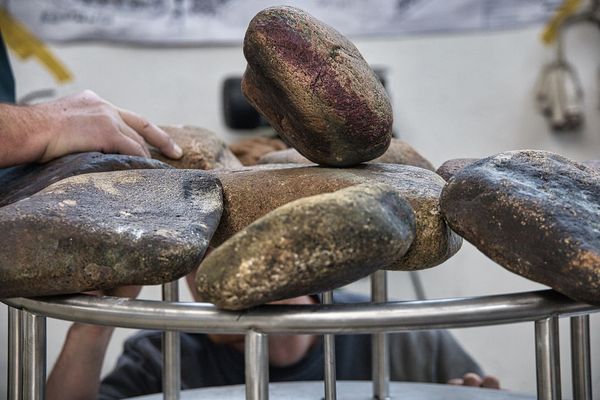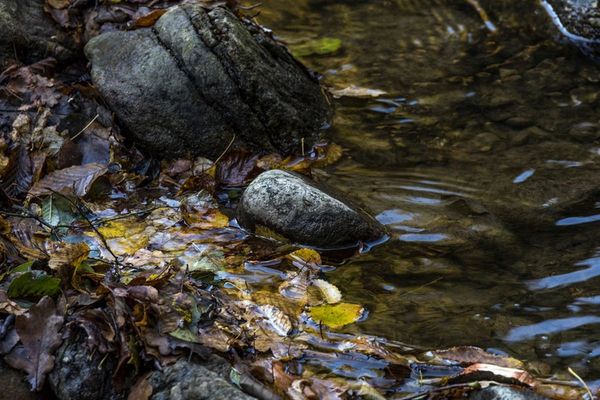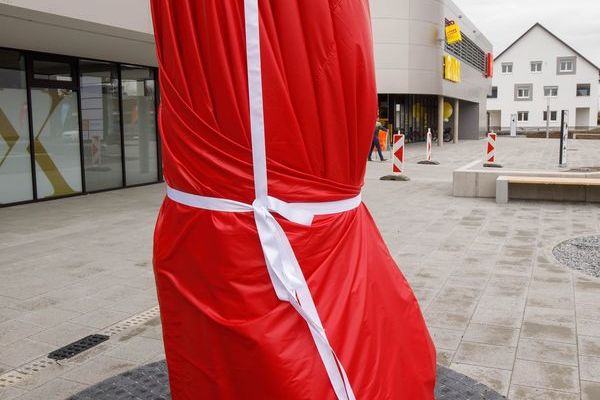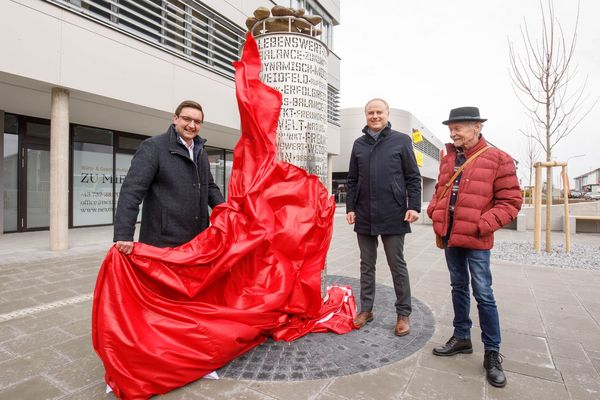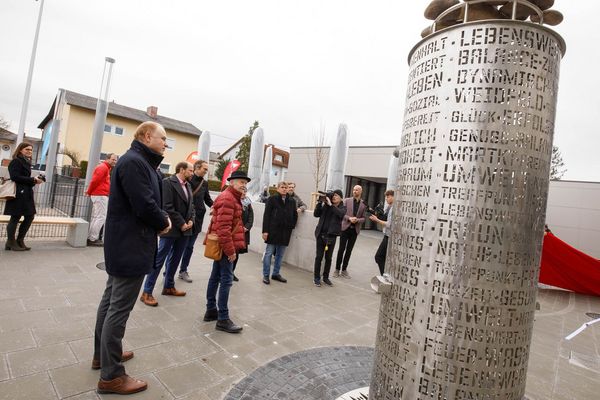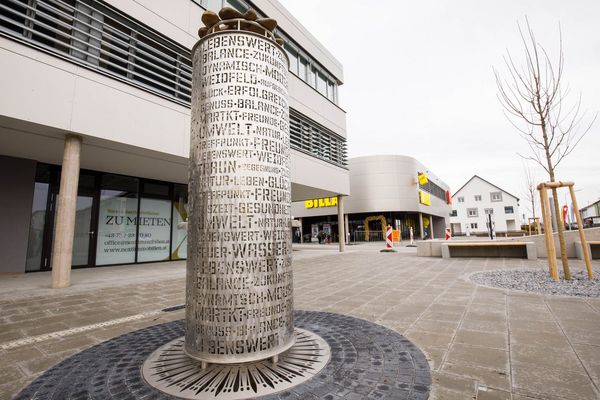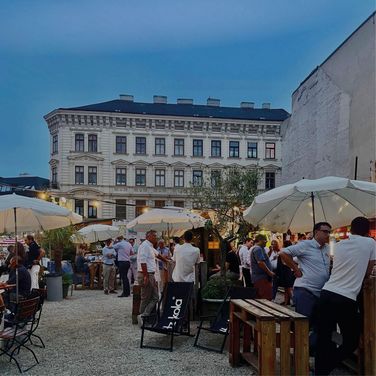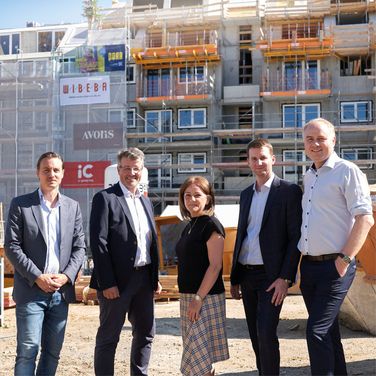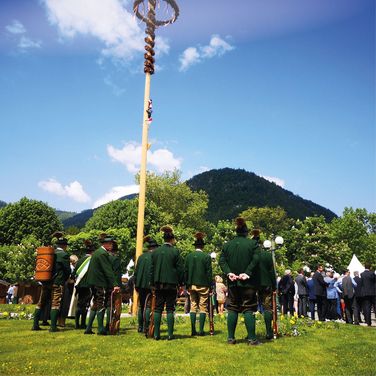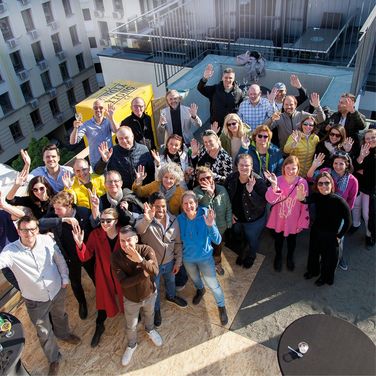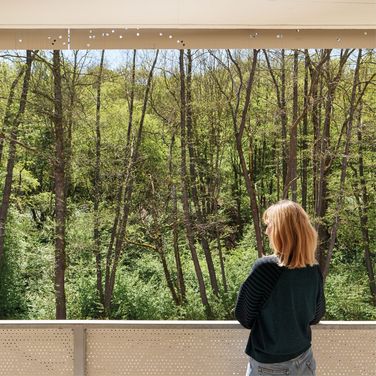Art in Weidfeld — an interview
- Topic
- Inspiration & Information
- Date
- 21.02.2022
The new Weidfeld Neighborhood Center in Traun/St. Dionysen defines itself as a modern market square. Lively and friendly, it aims to make the everyday life of neighborhood residents easier, better, and more pleasant by going beyond basic infrastructure. Public art has been selected to beautify the lively piazza at the entrance; here, we present an interview with artist Franz Durst.
Does this work of art have a name?
Yes, it has many names, they are lasered into the metal casing in a cloud of words. However, the short name is: “Fire (Light)—Water (Flow)—Air (Aether)—Earth (Stone)—Metal (Shape)”—in other words, the unification of the five energetic elements.
How does the piece relate to the building and the site?
is a modern, multifunctional district center, so the piece of art for it should also be multifunctional and a symbol of openness and agreement. As a centrally placed art object, it emanates togetherness and solidarity through its cloud of positive words, which the schoolchildren of Traun contributed to. Using the five elements expresses holisticness, and the formal vocabulary connects with the architectural design of the whole STZ complex.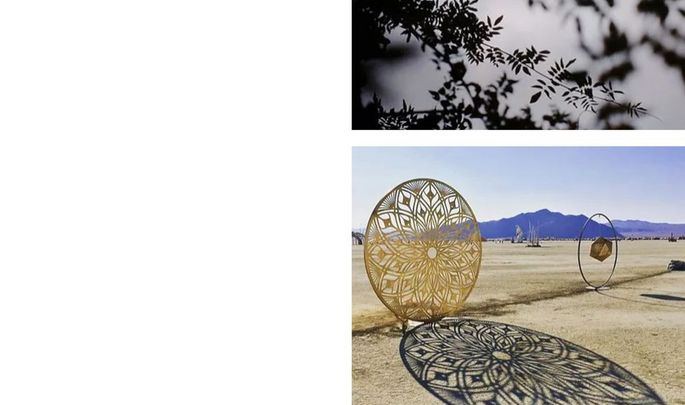
What is the guiding concept behind the artwork?
The piece is inspired by the play of light and shadow when the sun shines through the leaf canopy, casting shadows on the surfaces below, and also by ancient Oriental ornamental lanterns, which sparked the idea to make this central piece of art one filled with light.
At night, the artwork casts the letters of its idea cloud out across the environment, and even when the sun is shining, the piece continues to play with light and shadows. During the day, the typographic cut-outs and roughly polished metal of the work present themselves with lightness and transparency. Its two drinking water spouts also turn it into a drinking fountain. On hot summer days, the head of the artpiece sprays a mist of water, cooling those around.
Which materials did you use?
Basically, the underlying piece is a metal skeleton with a laser-cut sheet metal jacket of stainless steel. Light, water, and rocks also play a central role.
Tell me about the creative process; who was involved?
Fortunately, it was possible for the entire piece to be made at Gruber artistic metalworks in Hörsching, including the electric, light, and water installations. Mr. Gruber and his team were highly professional and communicative.
Did you find the same, working with us?
From the very first discussions and presentations down to the last details, the communication was always open and constructive—with the company managers, project managers, and construction managers alike. I had full artistic freedom and was able to learn from some of the constructive input AVORIS gave me.
You have been involved with the STZ for some time now—what do you think of the new community center?
It is a modern and ambitious neighborhood development project. It aims to be a communicative hub that connects people—and I think it will succeed.
What does this work of art mean to you?
It has become one of my favorite projects.
And are you already working on a new project?
Yes, indeed! While working on the STZ piece, I often wandered through the river meadows of the Traun—this resulted in a (photo)graphic cycle of pictures that I am currently preparing for an exhibition.
What role does art play in your life?
Viewing the world from centered and expanded perspectives is essential to understanding it. Continuously broadening your horizons makes you happy and lets your mind mature! This is true of art, as well as all other areas of life!
Franz Durst in 30 Seconds
Franz Durst is a quiet man with a big presence. A man who doesn’t need hobbies because the diversity of his art is so immensely satisfying. A global thinker who is mindful and has an open-minded interest in life. He almost became a chemist … until art entered his world. He then lived a bohemian life in France for years, followed by a teaching position at the Munich Academy. Today, he has moved back to his live-in art studio in Linz, where he also creates his wide spectrum of art pieces. Craft and philosophy, modern media and aesthetic questioning are united in his artistic forms of expression.
Photos and visualizations: Franz Durst
Images of the artwork unveiling at the official opening ceremony: Herman Wakolbinger
A detailed documentary on the concept and creation of the artwork can be found here.
